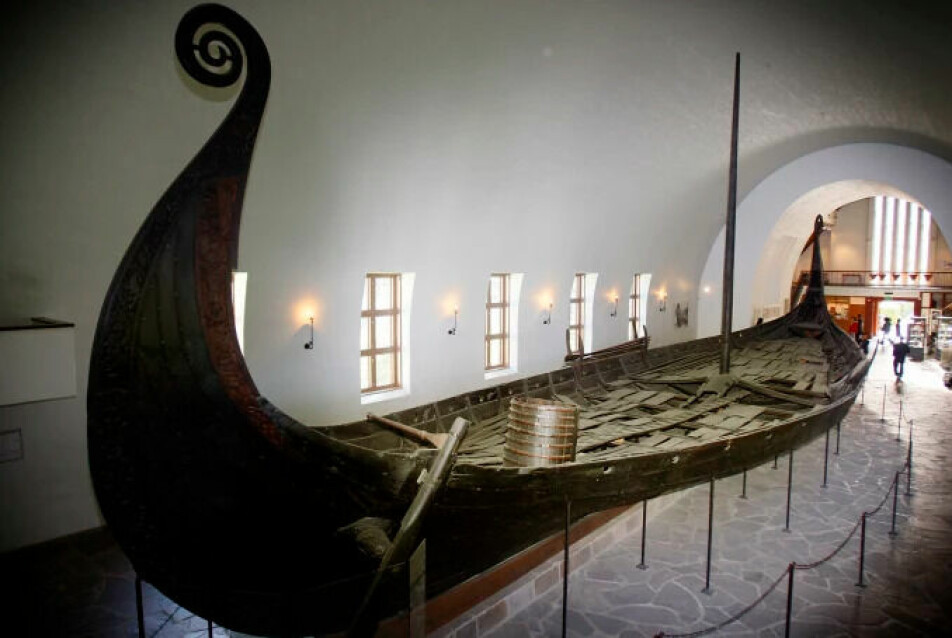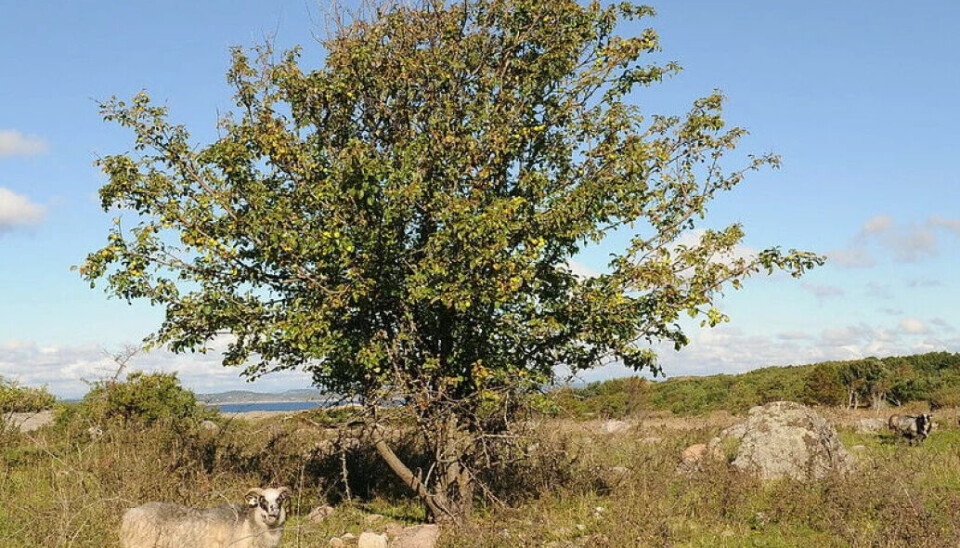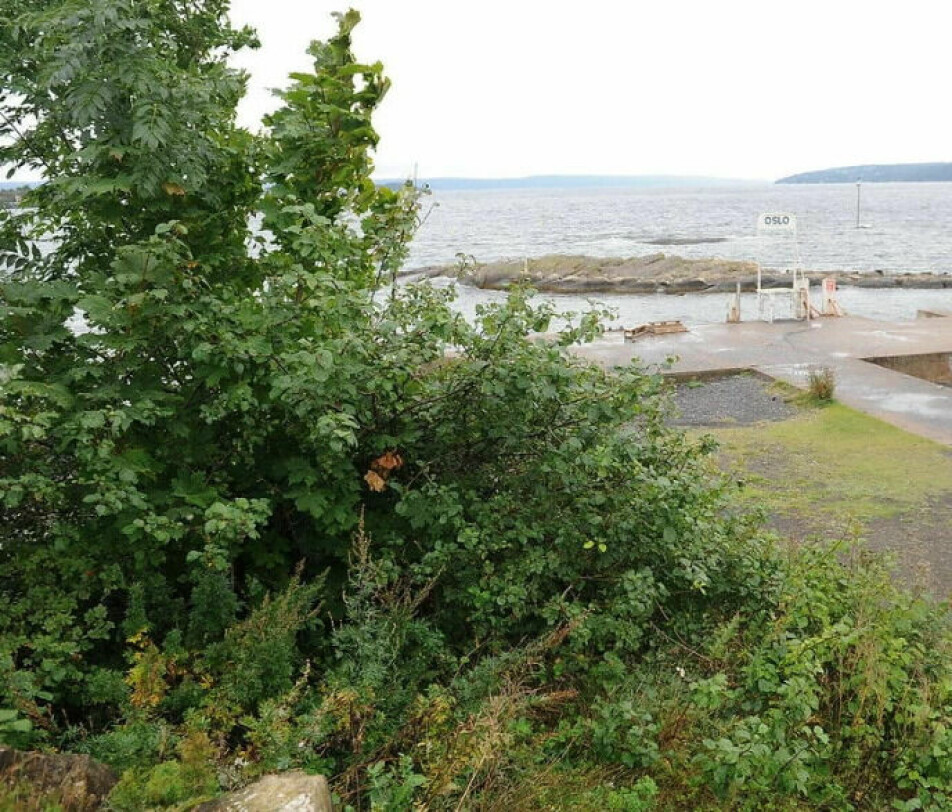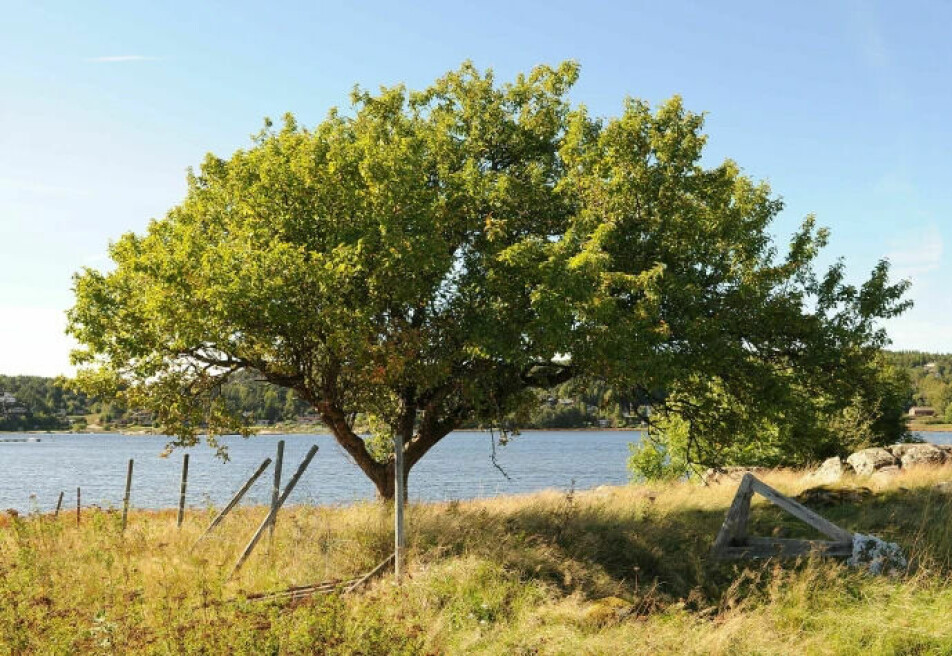
A Viking queen was buried with a bucket of these wild apples. Now researchers worry that their special genetic makeup will disappear
Most people who have tasted crab apples think they are inedible, but researchers still think they are important.
“Crab apples are completely safe to eat. But you will hardly think that it tastes good if you put your teeth in one. The taste is sour and bitter,” says Kjersti Fjellstad, who works with European crab apples at the Norwegian Genetic Resource Centre at NIBIO in Ås.
The European crab apples that grow in the wild are completely different from the apples we tend to grow in our own gardens.
They have been here since long before the Vikings.
And they were clearly of some importance to the Vikings, as the queen buried in the Oseberg Viking ship was sent to the afterlife with an entire bucket full of them.
- RELATED: What did the Vikings really eat?

Can become hybrid apples
Many people probably do not know that we have our very own apple species in Norway. And that we have had it since long before the apples we plant in our gardens came here from Asia.
But now Fjellstad and her colleagues fear that our wild crab apples will become hybrid apples – apples that are a cross between different species. These will have a different genetic makeup.
“We cannot exactly deny people the ability to grow apples in their garden,” Fjellstad tells sciencenorway.no.
She would still like to strike a blow for the preservation of the original Norwegian apple.
The concern is first and foremost the threat of reforestation, as well as the threat of interference from garden apple genes.
The European crab apple
“European crab apples have been historically important for the development of cultivated apples. Going forward, the genetic variation that these apples offer can therefore be smart to protect,” says Fjellstad.
“There may be properties in these apples that we will need in in the future. We just do not know yet,” she adds.
The European crab apple thus has a completely different value than just something considered ‘almost’ edible. It is also the case that the crab apples that grow in Norway are genetically different from those found elsewhere in Europe.
“In Western Norway, cultivators have now started experimenting with the use of crab apples found in the wild as an additive in cider production. The acidity in these apples is attractive to them,” Fjellstad says.

How to recognise crab apples
Per Arvid Åsen has been the lead conservator at the Natural History Museum in Agder and is now retired. He has traveled around much of Norway to register our wild crab apples.
“Most crab apples you see along the road now are hybrid apples. All over Norway, I have found genes from garden apples in crab apples,” Åsen tells sciencenorway.no.
If you first get to know the characteristics of the ‘authentic’ crab apple that grows in Norway, it is not difficult to recognise. A crab apple that has not been hybridised is very small, maybe 3 centimeters in diameter.
“These apples also have a long stem and taste so sour that most people will think it is inedible. If you can eat it, it's probably a hybrid,” Åsen says.
The end of May and the beginning of June is when it is easiest to find and recognise crab apples out in the Norwegian cultural landscape.
“During this time it blooms with some absolutely beautiful flowers,” Åsen says.

Help take care of the European crab apple
Kjersti Fjellstad at NIBIO believes that one of the best measures people can take to care for the European crab apple trees in Norway is to ensure plenty of open space around the trees.
These trees do not like to be in the shade.
“These are beautiful trees. They have pink flowers that look good in the cultural landscape,” she says. “For many, it might also be a little fun to know that they have an old apple tree on their property. A tree with roots far back in Norwegian history.”
Still optimistic
Although the European crab apple tree is threatened by hybridisation, the researcher is optimistic considering that more and more people are now becoming interested in biological diversity in nature.
“This is a typical example of a species with a natural place in Norwegian nature which has been put under pressure,” the researcher says.
“The good news is that many have the opportunity to make an effort to take care of this species,” she adds.

———
Translated by Alette Bjordal Gjellesvik.
Read the Norwegian version of this article on forskning.no
































